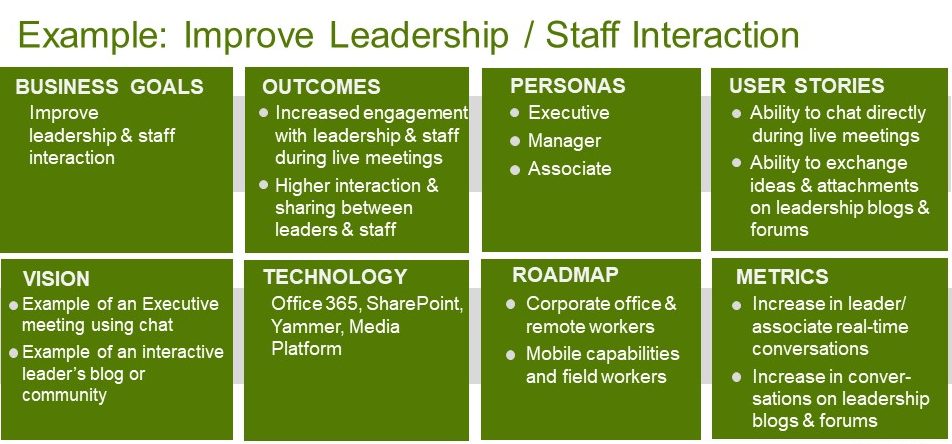 Digital Workplace plays an important role in workforce transformation. People want to work for organizations that are digitally savvy and create productive environments. Yet many organizations have trouble meeting worker expectations. IT can barely keep up with the changes. Maybe a new acquisition is happening, maybe it’s just time to revamp the tools your workers are using. Perhaps hiring smart, savvy younger workers is the goal. Whatever the challenge, many organizations are looking at the tools they provide workers with renewed interest. And one of those is the next generation Intranet, a communications and collaboration platform that improves productivity and binds everyone together.
Digital Workplace plays an important role in workforce transformation. People want to work for organizations that are digitally savvy and create productive environments. Yet many organizations have trouble meeting worker expectations. IT can barely keep up with the changes. Maybe a new acquisition is happening, maybe it’s just time to revamp the tools your workers are using. Perhaps hiring smart, savvy younger workers is the goal. Whatever the challenge, many organizations are looking at the tools they provide workers with renewed interest. And one of those is the next generation Intranet, a communications and collaboration platform that improves productivity and binds everyone together.
An Effective Digital Workplace: A Powerful Force
But experience has shown that Intranets and early Digital Workplaces are messy. These large unwieldy systems often grow organically and contain a lot of outdated information. Search doesn’t work. Processes are hybrid band-aids that lower productivity. Yet, when done right, a Digital Workplace is an incredibly powerful force that unifies and connects people across the Enterprise. The right tools support collaboration where people work at their own pace naturally and effortlessly. An effective search greatly reduces the amount of time it takes to find people and content. A good Digital Workplace breaks down some of the organizational silo’s and encourages participation and innovation to solve problems and create value.
Yes, a Digital Workplace is worth the journey and a good Digital Strategy will get you there. How you go about it will determine the success of the project. What are the options? To save time, you can get a group of people from different business areas with a stake in the outcome and bring them together to brainstorm goals and use cases. Don’t forget the end users, one or two workshops to give them a say, document it and you’re done. This will get you a lot of insight and documents, but it doesn’t lead to a cohesive strategy that communicates the vision and lays out the plan. A strategy creates direction and a sense of purpose. Without it the work will still get done but people will have a hard time figuring out priorities and how their piece fits in with the bigger picture.

A Realistic Roadmap
At Dell Consulting, we’ve done many Digital Workplace strategies over the years for some of the largest, global organizations. We’ve seen the power of a successful strategy, one that is tied to a clear set of goals and values, with stories and outcomes aligned to worker needs. A strategy level sets expectations with a realistic roadmap to get it done. And, each outcome can be measured and adapted for change. This is what we’ve learned and recommend – to ensure success, create an effective Digital Workplace strategy that connects the details and results in an achievable plan.

Here’s a simple example using a Communications goal. One challenge many large enterprises face is how to enable more dialogue between leaders and staff. This is especially important when talking about latest results and strategy. Organizations need honest, open communications to be more responsive and initiate change. This goal is often discussed on Digital Workplace projects.
The example below shows this goal, the supporting elements and how they connect in the strategy.

The Digital Workplace Strategy ensures goals are implemented and met. Product owners of different technologies will know what to budget and when it’s needed. Communications professionals can alert business owners on the upcoming improvements and how they’ll engage. Everyone involved with the project knows what’s needed and why. Most important, budgets and timelines can be set based on tangible outcomes that everyone agrees on.
Summary
The best thing about a Digital Workplace Strategy is that it can be started right away. Many organizations have an Intranet in place and are thinking about upgrading their suite of tools. They have an idea of the goals and outcomes they want to achieve but implementing technology takes time. A Digital Workplace Strategy begins with critical user research that can be started while IT decisions are being made. Workforce transformation is an on-going journey that provides tremendous value, and a well-planned Digital Workplace is a major part of that story.
Learn more about our perspective on Digital Workplace by downloading our eBook Empower the workforce with consumer-grade, personalized experiences:
Related Blogs:
Trends Impacting Digital Workplace Strategies
Office 365 Security and Compliance Tools for Collaboration Apps – Are You Covered?
4 Tools and Techniques to Create Change and Empower the Workforce with Personalized Experiences (eBook)


